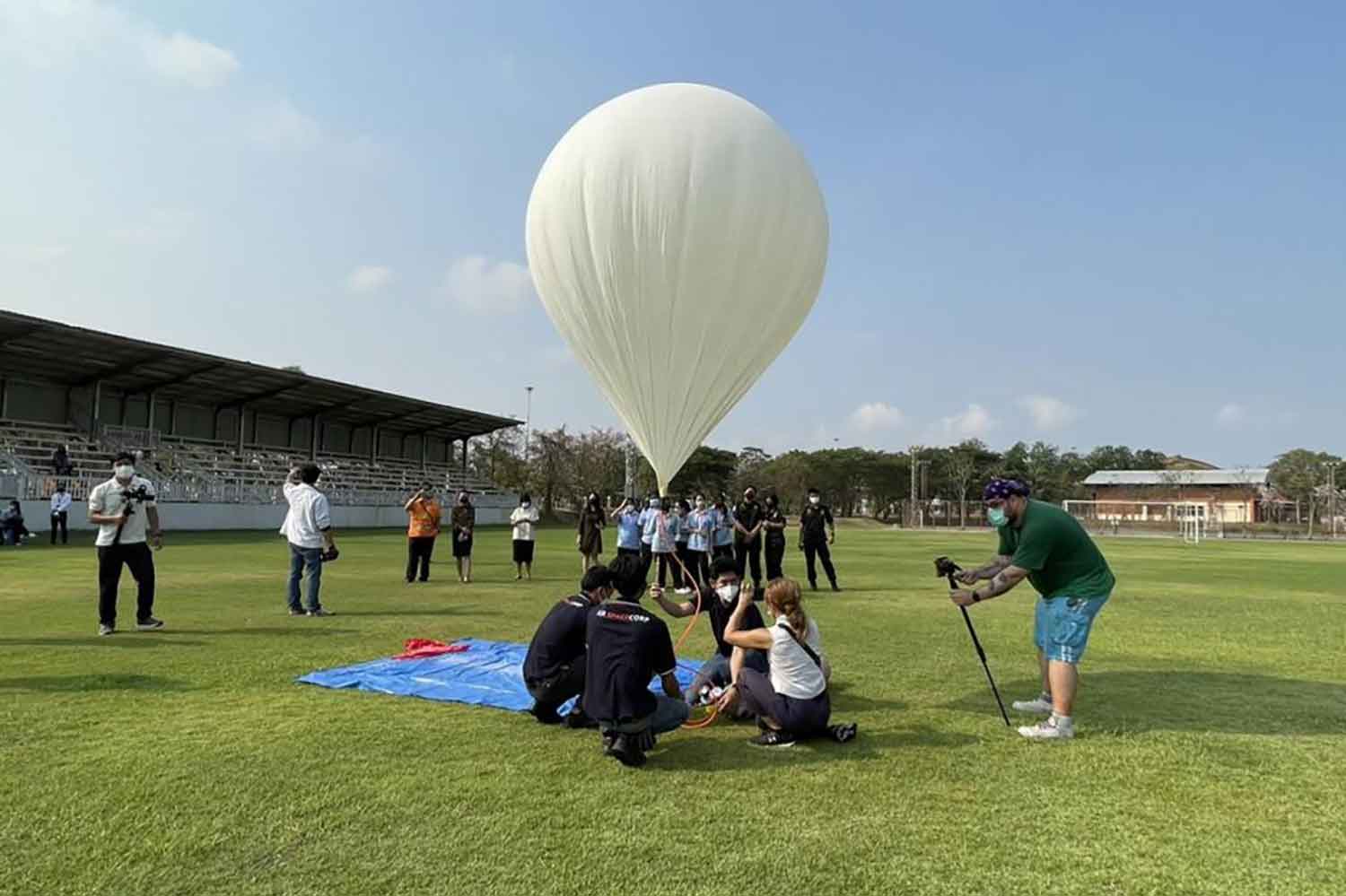
A team of researchers on Thursday sent the Thai dish Pad Kaprao into the atmosphere using a high-altitude balloon as a part of the Geo-Informatics and Space Technology Development Agency's (GISTDA) space programme.
The balloon was sent into the atmosphere to mark the launch of the country's High-Altitude Experiment Platform at the Bueng Boraphet nature study centre in Nakhon Sawan.
The launch is considered the country's first use of a high-altitude balloon in a space experiment. Thailand's balloon launch involved the famous dish and reached about 30 kilometres from the ground.
Pad Kaprao is a dish made with basil leaf and any meat of choice, usually laid on top of rice.
Amarin Pimnoo, a GISTDA engineer and head of the National Space Exploration project, said the experiment was designed to study the effects of high altitudes on nutrients.
He said the dish was chosen for the experiment because it is delicious and easy to cook at a cheap cost, while noting that all kinds of Thai dishes should be studied in space.
With Thai food becoming more internationally popular, it is possible that it can be developed as space food, Mr Amarin said.
"Is our Pad Kaprao edible in space? Will any of the nutrients be destroyed or will they improve? Let's wait for it," he said, adding high-altitude balloons have vast potential. "The gist of this flight is that we've created the High-Altitude Experiment Platform."
He then hinted that GISTDA is developing a small spaceport to send up satellites using balloons.
Tatiya Chuentrakul, vice director for GISTDA's partnership and knowledge-building department, said the High-Altitude Experiment Platform could become a model in the country's science and technology research efforts.
"We did send balloons into the sky but sending balloons high into the atmosphere for space science has never taken place in Thailand," he said. "It is the country's first, and marks the beginning of the space experiment platform. It can lead to new ideas and innovations."
Mr Tatiya said the high-altitude balloons can be used to study the effects of near space on other substances, which could lead to farming in near-space possibilities. He said the balloons can help the country build its knowledge of space science.